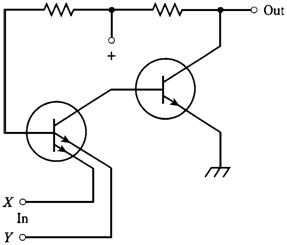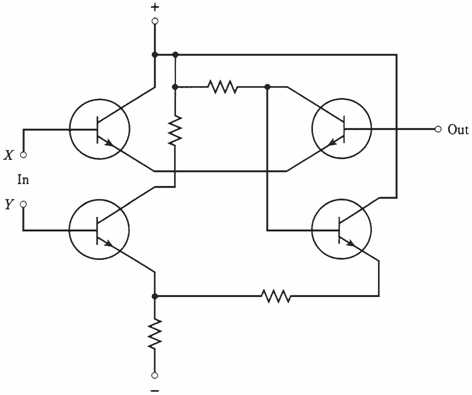MOS digital ICs
Several variants of MOS technology are developed for use in digital devices. They all provide superior miniaturization and reduced power requirements which are compared with bipolar digital ICs

Figure ---- A simple TTL gate.

Figure--A simple ECL gate.
CMOS
Complementary-metal-oxide-semiconductor (CMOS), pronounced seamoss (and sometimes written that way by lay people who have heard the term but never seen it in documentation), employs N-type and P-type both silicon on a single chip. This is similar to using N-channel and P-channel FETs in the circuit. The basic advantages of the CMOS technology are very low current drain, high operating speed, and resistance to noise.
NMOS/PMOS
N-channel MOS provides simplicity of design, along with high operating speed. P-channel MOS is similar to NMOS, but speed is slower. An NMOS or PMOS digital IC is like a circuit which uses N-channel FETs, or P-channel FETs. You may think of NMOS as batting right-handed and PMOS as batting left-handed. (Then the CMOS is analogous to switch hitting.)
New trends
Research is constantly being done to find ways to increase the speed, reduce the power requirements, and get better miniaturization of digital ICs. The motivation occurs mainly from constant consumer pressure for more sophisticated and portable computers. As technology advances, you can expect to see notebook personal computers with more memory and higher working speed. The batteries will last longer, as evolving technologies will consume less current.